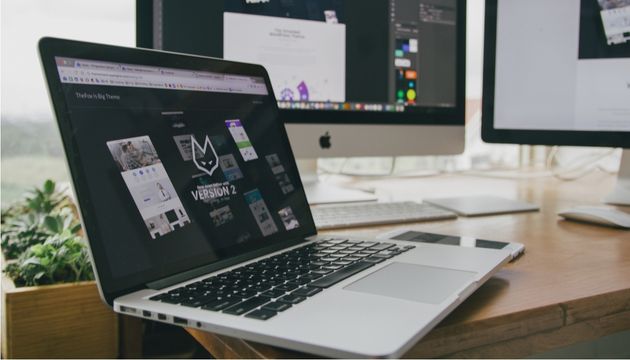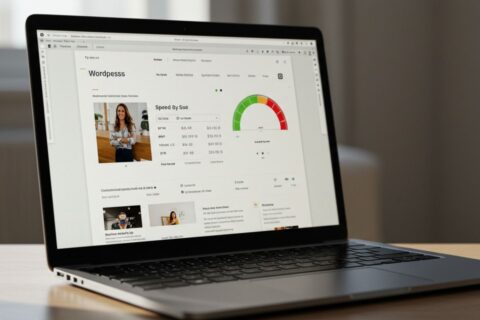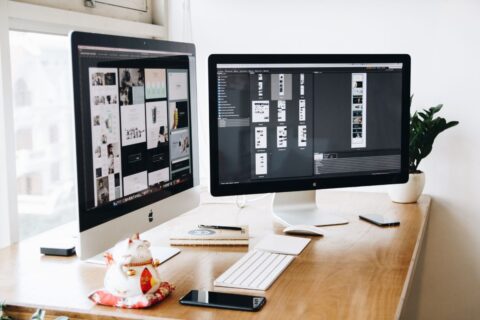Dark mode has quickly become one of the most popular features across smartphones, laptops, and even web apps. People love its sleek look, the way it’s easy on the eyes, and, of course, the hope that it saves battery or even boosts device speed. But does dark mode really increase device speed, or is it just a visual trend? Let’s dig into what’s really going on—and what it means for your daily experience.
What Is Dark Mode? More Than Just a Color Swap?
At its core, dark mode is a visual setting that changes the background of your device or app from light to dark, usually replacing white or light grey backgrounds with black or deep grey. It’s built into most major operating systems—Android, iOS, Windows, and macOS—and is now offered by most popular apps as well.
But dark mode is more than just a color change. When you turn it on, the operating system and apps adjust not just the look but also how content is rendered and displayed. This can affect everything from screen readability to battery usage—and possibly performance.
One crucial factor is your screen type. On OLED and AMOLED screens, dark mode can turn off individual pixels for black areas, which can save energy and sometimes reduce strain on the hardware. On LCD screens, however, the entire backlight remains on regardless of the screen color, so the impact is different. This OLED vs LCD dark mode performance difference is key to understanding whether dark mode will truly make a difference for you.
The Technical Side: How Dark Mode Interacts with Hardware:
The way dark mode is rendered depends heavily on the type of screen technology you’re using. OLED and AMOLED displays are known for their deep blacks and power efficiency because when a part of the screen is black, those pixels are actually turned off. This can reduce energy use and, in theory, ease the workload on some hardware components.
On the other hand, LCD screens don’t benefit as much. With LCDs, even if the image is black, the backlight is still running at full power, so the battery savings and performance differences are minimal. This is why OLED vs LCD dark mode performance remains a hot topic, especially for users wondering if the switch is worth it.
So, does dark mode increase device speed from a technical standpoint? For most modern devices, the CPU and GPU don’t have to work significantly less just because the screen is darker. Rendering dark pixels versus light ones doesn’t add or remove much processing work for these chips. However, certain user interface elements, animations, or apps may behave a little differently—especially if they’re heavily customized for dark mode.
There’s also system resource usage to consider. While dark mode itself doesn’t directly reduce RAM or background processing requirements, some users on older or low-end devices report a slightly smoother experience. This could be because some custom skins or themes in dark mode have lighter resource needs.
Leading Website Development Agency in Canada
Performance Benchmarks: Dark Mode in Real-World Use:
Let’s get practical: What do tests and user reports actually show? In most real-world tests, the speed difference between dark mode and light mode is so small that you might not even notice it. App loading times, scrolling, and animation performance are usually about the same.
However, there are exceptions. On some dark modes for low-end devices—especially those running older versions of Android or iOS—users sometimes find that switching to dark mode helps reduce lag in certain apps or menus. This is usually because the system’s default themes in dark mode are more lightweight, using fewer custom images or animations. But on the whole, it’s rare to see dark mode increase device speed in a dramatic way.
Some benchmarks on social media and productivity apps suggest that scrolling and animation can feel a little snappier, but the difference is often psychological rather than technical. Unless the app is poorly optimized (which we’ll talk about below), switching to dark mode shouldn’t slow things down.
The Battery Life Factor: Indirect Effects on Performance:
While the question is, does dark mode increase device speed, sometimes the answer lies in how it affects battery and system temperature. On OLED/AMOLED screens, dark mode can definitely extend battery life, especially if you use your device heavily at low brightness.
Why does this matter for performance? When your device runs cooler (thanks to using less power for the screen), it’s less likely to throttle performance to prevent overheating. This means your phone or laptop may maintain peak speed for longer periods. This benefit is mostly indirect, but it’s one reason people feel like their device is “faster” in dark mode.
Still, this effect is much more noticeable on OLED or AMOLED displays than on LCD screens. The OLED vs LCD dark mode performance discussion is important: if you have an older LCD phone or laptop, don’t expect big performance jumps just by switching to dark mode.

App Developers’ Perspective: Optimizing for Dark Mode:
If you’re an app developer, dark mode brings its own set of challenges. Implementing it well means making sure that your app not only looks good, but also runs smoothly. Sometimes, poor coding can make dark mode slow down apps, especially if the theme uses lots of custom graphics, gradients, or extra animations.
Best practices for dark mode settings for performance include using simple color schemes, minimizing extra visual effects, and testing both dark and light modes for bugs. Many modern UI frameworks (like Flutter, React Native, or SwiftUI) make it easy to implement dark mode efficiently. For users, the best dark mode settings for performance are usually the default ones provided by your device or favorite apps.
How Dark Mode Affects Battery Life and Device Performance?
User Experience: Perceived Speed vs. Actual Performance:
Why do so many people say their phone or computer “feels faster” in dark mode, even if the numbers don’t back it up? There’s a strong psychological component. Dark mode can reduce eye strain, especially in low-light environments, and the high contrast can make text and buttons stand out more.
This feeling of clarity and focus can create the impression that apps are loading faster or responding more quickly. In reality, the technical gain is often minor, but the improvement in comfort is very real. For those who use their devices for long periods—especially at night—dark mode can genuinely make everyday tasks feel easier and more pleasant.
When Dark Mode Might Slow You Down (and How to Avoid It)?
Dark mode isn’t perfect for everyone or every device. Some users, especially those with older phones or tablets, have found that dark mode slows down apps—usually because the app hasn’t been properly optimized. Custom themes, third-party launchers, or poorly coded dark mode features can add extra load to the processor or memory, resulting in sluggish performance.
This is especially true for dark mode for low-end devices, where every bit of system resource counts. If you notice that your favorite app lags or glitches in dark mode, try switching back to the default theme or updating the app. For most users, sticking to the best dark mode settings for performance—meaning those that are built into the operating system or main app—is the safest bet.
Conclusion: The Real Impact of Dark Mode on Device Performance
So, does dark mode increase device speed? For most people, the answer is: only a little, and usually not in a way you’ll notice every day. The main benefit comes from potential battery savings on OLED or AMOLED screens, which can keep your device cooler and more efficient. There can be minor gains for users with low-end devices, but don’t expect dramatic improvements unless your apps are poorly optimized.
If you like the look and feel of dark mode, or if you use your device for hours in dim light, there’s no harm in turning it on. Just remember that performance changes are small, and for most people, it’s the comfort and battery life that matter most.
FAQs
Does dark mode make phones or laptops run faster?
In most cases, dark mode doesn’t dramatically increase device speed. However, some users with older or low-end devices may notice a slight improvement in app smoothness or responsiveness, mostly due to lighter themes and less resource-heavy UI.
Will dark mode save RAM or storage space?
Not really. Dark mode changes how your device displays colors but doesn’t directly affect how much RAM or storage is used. The exception is if an app’s dark mode is more lightweight or uses fewer resources by design.
Why do some apps feel smoother in dark mode?
This is partly psychological—high contrast and less eye strain make apps “feel” faster. In rare cases, apps that use simpler dark mode themes may run a bit smoother, especially on low-end devices.
Can using dark mode cause any performance issues?
Yes, if an app’s dark mode is poorly optimized, you might experience glitches or slower performance. This is more common with custom launchers, older apps, or dark mode for low-end devices. Stick to the built-in dark mode for the best results.







